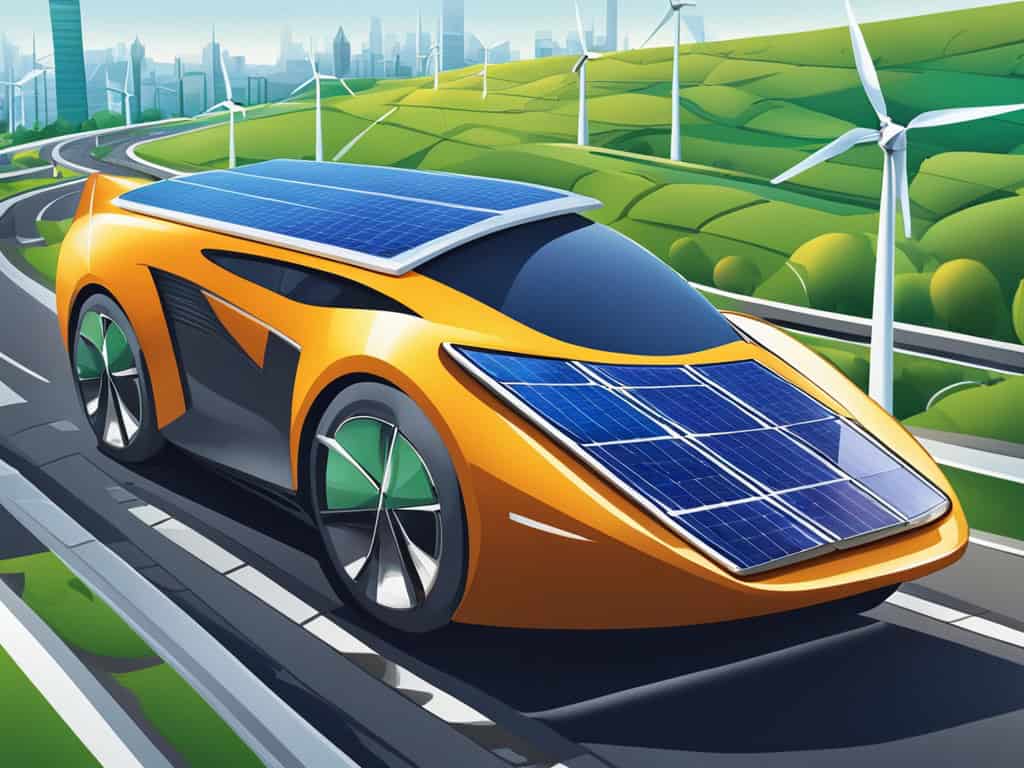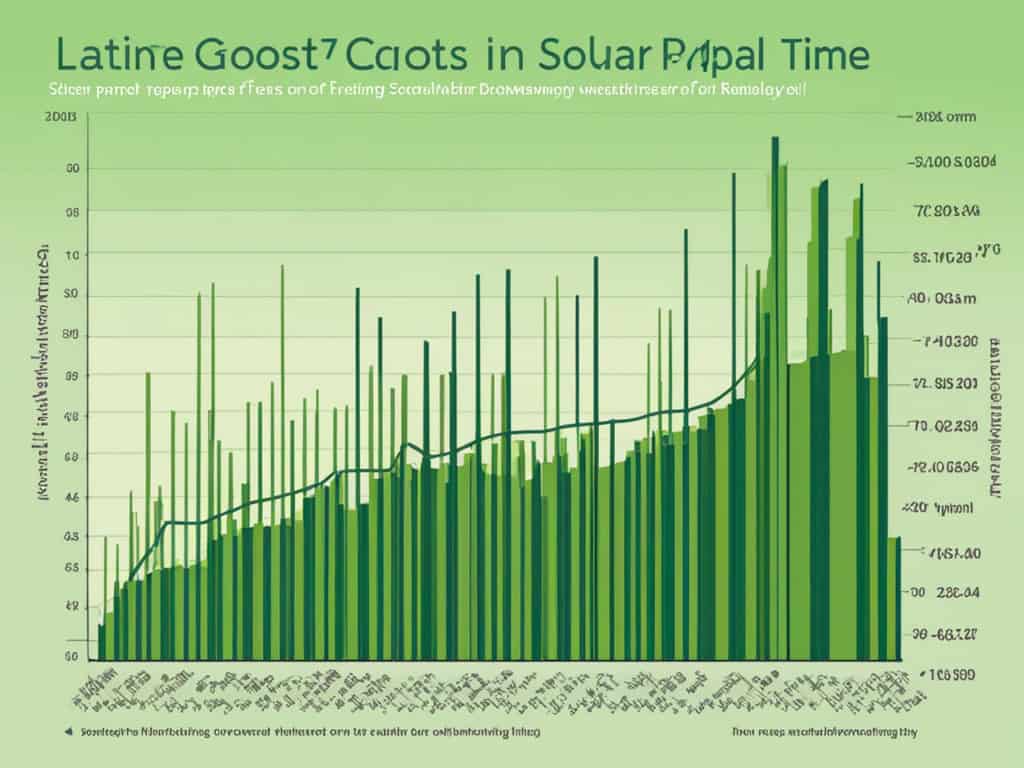When Were Solar Panels First Used? The History Explained
When were solar panels first used? Discover the fascinating history of solar technology, from its pioneering beginnings to its current widespread applications.

Did you know people have been thinking about using solar power since 7th century B.C.? This was long before the first Earth Day on April 22, 1970. Edmond Becquerel, a physicist in France, noticed something cool in 1839. He found that light could create electricity. This was an early key step in making solar energy work.
Key Takeaways
- The photovoltaic effect, which is the basis of solar energy, was discovered by Edmond Becquerel in 1839.
- The first solar cell was created by Charles Fritts in 1883, using selenium coated with a thin layer of gold.
- Solar power was first used in space applications, powering satellites and spacecraft in the late 1950s and 1960s.
- The cost of solar panels has dropped dramatically, from INR 21,600 per watt in 1956 to as low as INR 36 per watt today.
- Fenice Energy offers comprehensive clean energy solutions, including solar, backup systems, and EV charging, backed by over 20 years of experience.
The Origins of Solar Energy
Solar energy’s history goes back centuries, with ancient human communities using the sun in different ways. By the 7th century B.C., people could start fires using the sun and magnifying glasses. This marked the birth of using solar power.
Early Use of Sunlight
The in the 3rd century B.C., the Greeks and Romans used mirrors to turn sunlight into fire for religious rituals. They called these mirrors “burning mirrors”. This was the first practice of focusing sunlight for specific uses.
Harnessing Solar Power Through Mirrors
By the year 20 A.D., the Chinese were also using mirrors to gather solar power. They used their knowledge to heat and cook food. Such early uses paved the way for future solar technologies.
Sunrooms: Capturing the Sun’s Warmth
Early on, people built sunrooms to capture the sun’s heat. These rooms made living spaces cozy. They were an early form of solar technology.
Pioneering Discoveries in Photovoltaics
Solar panel technology grew through contributions from many scientists. There’s some debate on the exact origin and key contributors. But, one standout is French scientist Edmond Becquerel.
Edmond Becquerel’s Photovoltaic Effect
French scientist Edmond Becquerel is often credited for the solar cell’s invention. He found out that light could boost electricity production when it was shining on metal electrodes in a solution. This discovery, known as the “photovoltaic effect,” laid the foundation for using selenium in PV developments.
Selenium and the First Solar Cells
In 1883, Charles Fritts made history by installing the first solar panels on a New York City rooftop. He used selenium coated with gold to create the first solar cell. This cell produced electricity with a conversion rate of 1 to 2 percent. It was a small start but marked a crucial beginning for solar panel technology in the U.S.
Bell Labs and the Silicon Photovoltaic Cell
In 1954, Bell Labs’ creation of the silicon photovoltaic cell was a game-changer. It led to applications like powering satellites and the rise of solar energy systems around the world.
when were solar panels first used
In the late 19th century, work in solar technology started. Charles Fritts was a key figure. In 1883, he put the first solar panels on a New York City rooftop.
Early Solar Cell Prototypes
He made the first solar cell using selenium and a bit of gold. This setup let the cell create a solid electric current in the sun. However, it could only convert about 1 to 2 percent of the sunlight into electricity.
Charles Fritts’ Selenium Solar Panels
Despite its low efficiency, Fritts’ invention was a big step in solar panel history. These selenium solar panels showed how sunlight could turn into electricity. This breakthrough set the stage for better solar power technologies in the future.
Advancements in Solar Technology
Solar technology started with space applications. In 1958, the Vanguard I satellite used a one-watt panel to power its radios. This was a big step. Later that year, several more satellites were launched with solar power tech.
Solar Power in Space
By 1964, the first Nimbus spacecraft was flying with solar power only. It used a 470-watt solar array. Then, in 1966, NASA launched the first Orbiting Astronomical Observatory, powered by a one-kilowatt solar array.
First Solar Residence: Solar One
At the same time, solar technology began to shine on Earth too. In 1973, “Solar One” was built in Tempe, Arizona. This was the first house to be fully solar-powered. It showed that solar energy could power homes.
Improving Solar Conversion Efficiency
Since then, scientists have made solar cells better at turning sunlight into electricity. This work has made solar power cheaper and more useful. Now, both homes and businesses can benefit from solar energy.

Solar Energy Milestones
The world has been thirsty for renewable energy. Solar technology has kept up, achieving new highs. We’ve seen solar planes fly and leaders back solar power. The industry is now a major player in the move to cleaner energy.
Solar-Powered Airplanes
In 1981, Paul MacCready brought us the Solar Challenger, the first solar plane. It flew from France to the UK, showing what solar tech could do. Since then, solar flights have gone even further. In 2016, Bertrand Piccard circled the globe in the Solar Impulse 2. It was the largest solar plane ever made.
Presidential Embrace of Solar Power
U.S. presidents have also joined in, showing the power of solar. In 1979, Jimmy Carter put solar panels on the White House. This was the first time the White House used solar energy. Even though they were taken down, it highlighted the push for green power. Later, in 2010, Barack Obama put new solar panels up in the White House. This was to support the solar industry and its shift towards cleaner energy.
The Declining Cost of Solar Panels
Over the past few decades, solar panel prices have fallen a lot. This drop has caused huge growth in people buying solar panels. As of early 2016, there were more than one million solar installations in the U.S.
Back in 1956, buying a solar panel would cost you about INR 21,600 per watt. By 1975, the cost went down to a bit over INR 7,200 per watt. Now, the same panel can be as cheap as INR 36 per watt.
Since 1980, the cost of solar panels has been dropping by 10 percent or more each year. This drop in price has made solar very popular. It’s now seen as a dependable source of energy worldwide. 
Fenice Energy is at the forefront of supplying green energy solutions. Their work includes solar, backup systems, and EV charging. With more than 20 years in the field, they stand out. Thanks to these price drops, more consumers in India are choosing solar energy.
Conclusion
The story of solar power is an amazing one. It has evolved over many centuries with great advancements. The journey started with simple ideas about the sun’s power. Now, it has blossomed into a key technology for a sustainable future.
Solar energy is now everywhere around us. It runs many devices and supports various industries. The cost of solar panels has dropped drastically. This is thanks to better manufacturing and big production scales. Now, many people in India can choose solar energy. Fenice Energy plays a big part in this. It has over 20 years of experience offering clean energy solutions. These include solar power, backup systems, and electric vehicle charging. This makes it simple for everyone to use solar energy.
The fight against climate change and the need for clean energy is more urgent than ever. Solar power shows us what can be achieved with hard work and new ideas. With the help of companies like Fenice Energy, our future can be filled with the promise of solar energy in India.
FAQ
When were solar panels first used?
In the 19th century, the journey of solar panels began. French physicist Edmond Becquerel found the photovoltaic effect in 1839. This discovery set the stage for solar cell technology. The 1880s saw the birth of the first solar cells. By 1883, inventor Charles Fritts placed the first solar panels on a rooftop in New York City.
How did early solar technology work?
Early solar tech worked by turning light energy into electricity. This process is known as the photovoltaic effect. Key scientists including Edmond Becquerel and Charles Fritts used materials like selenium and silicon for the first solar cells and panels.
What were some of the earliest uses of solar power?
One of the first big uses was in space, starting in the late 1950s. Solar panels powered satellites like the Vanguard I in 1958 and the Nimbus in 1964. NASA quickly became a leader in solar power for its space missions.
How have solar panel prices changed over time?
Solar panel costs have fallen a lot since 1956. Back then, they were per watt. By 1975, prices had reduced to over a watt. Nowadays, solar panels can be as cheap as
FAQ
When were solar panels first used?
In the 19th century, the journey of solar panels began. French physicist Edmond Becquerel found the photovoltaic effect in 1839. This discovery set the stage for solar cell technology. The 1880s saw the birth of the first solar cells. By 1883, inventor Charles Fritts placed the first solar panels on a rooftop in New York City.
How did early solar technology work?
Early solar tech worked by turning light energy into electricity. This process is known as the photovoltaic effect. Key scientists including Edmond Becquerel and Charles Fritts used materials like selenium and silicon for the first solar cells and panels.
What were some of the earliest uses of solar power?
One of the first big uses was in space, starting in the late 1950s. Solar panels powered satellites like the Vanguard I in 1958 and the Nimbus in 1964. NASA quickly became a leader in solar power for its space missions.
How have solar panel prices changed over time?
Solar panel costs have fallen a lot since 1956. Back then, they were $60 per watt. By 1975, prices had reduced to over $20 a watt. Nowadays, solar panels can be as cheap as $0.10 per watt. Lower prices have made solar energy more popular.
Who are some of the pioneers of solar power?
Pioneers in solar technology include Edmond Becquerel, who found the photovoltaic effect. Charles Fritts made the first solar cells. Scientists at Bell Labs created the first silicon cell in 1954. NASA’s space programs were also essential in the progress of solar power.
.10 per watt. Lower prices have made solar energy more popular.
Who are some of the pioneers of solar power?
Pioneers in solar technology include Edmond Becquerel, who found the photovoltaic effect. Charles Fritts made the first solar cells. Scientists at Bell Labs created the first silicon cell in 1954. NASA’s space programs were also essential in the progress of solar power.


